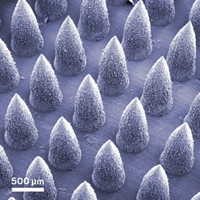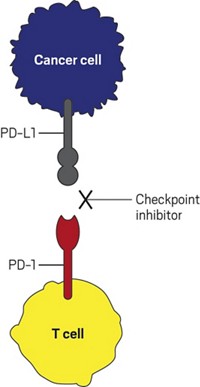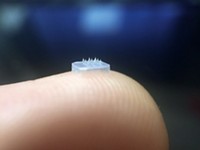Advertisement
Grab your lab coat. Let's get started
Welcome!
Welcome!
Create an account below to get 6 C&EN articles per month, receive newsletters and more - all free.
It seems this is your first time logging in online. Please enter the following information to continue.
As an ACS member you automatically get access to this site. All we need is few more details to create your reading experience.
Not you? Sign in with a different account.
Not you? Sign in with a different account.
ERROR 1
ERROR 1
ERROR 2
ERROR 2
ERROR 2
ERROR 2
ERROR 2
Password and Confirm password must match.
If you have an ACS member number, please enter it here so we can link this account to your membership. (optional)
ERROR 2
ACS values your privacy. By submitting your information, you are gaining access to C&EN and subscribing to our weekly newsletter. We use the information you provide to make your reading experience better, and we will never sell your data to third party members.
Materials
Nanoparticles Working Together
Cancer Therapy: Tiny materials ‘talk’ to one another to locate, treat tumors in mice
by Lauren K. Wolf
June 27, 2011
| A version of this story appeared in
Volume 89, Issue 26

A two-component, nanoparticle-based system efficiently pinpoints and delivers drugs to tumor cells in mice by using blood-clotting enzymes to enable the components to communicate, according to a report in Nature Materials (DOI: 10.1038/nmat3049).
Developed by a team led by Sangeeta N. Bhatia, a bioengineer at MIT, the communicating particles are able to deliver 40 times as high a dose of drug as one type of particle can deliver by itself. Although “sequential dosing schemes have been tried before with particles” that bind one another rather than communicate, Bhatia says, they “have lacked the signal amplification of our method.” This approach could enable physicians to administer to patients a smaller amount of chemotherapeutics than is currently used, thus reducing the side effects of treatment.
The system consists of two types of nanoparticles: polyethylene glycol-coated gold nanorods and cancer-drug-bearing liposomes tagged with a peptide that binds to an enzyme in the blood-clotting cascade.
First, the researchers inject mice with the nanorods. When they shine near-infrared light on the rodents’ tumors, the light locally heats the nanorods that find their way into the tumor. The heat damages the tumors’ blood vessels and initiates clotting. The researchers then inject the mice with the tagged liposomes loaded with the cancer drug doxorubicin.
As people in distress might send a flare to direct rescuers to their location, the nanorods direct the drug-carrying liposomes to the tumor through the clotting enzyme to which the liposomes are designed to bind.
In addition to delivering a higher concentration of doxorubicin to tumors than liposomes alone can, the two-component nanosystem also prevented tumor growth in mice for more than 20 days after treatment, the researchers show.
“This work demonstrates the innate benefits that can be offered through the use of different nanoparticles united into one treatment strategy,” says Dean Ho, a biomedical engineer at Northwestern University. Future studies, he says, should illuminate a spectrum of diseases to which scientists can apply this coordinated approach.





Join the conversation
Contact the reporter
Submit a Letter to the Editor for publication
Engage with us on Twitter